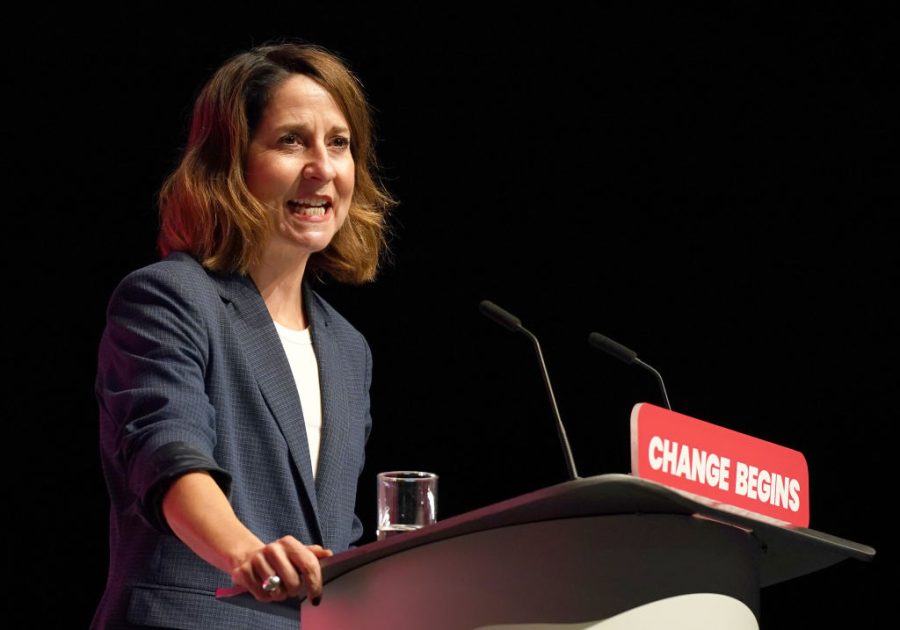The government has today announced a £45 million work drive, with proposed changes to the welfare and out-of-work support systems, in a bid to get more people back in work and off benefits. In particular, the government has said that it wants to tackle the statistic that one in eight young people aged between 18 and 24 not currently in employment, education or training. It plans to do so by offering skills training to teenagers with institutions such as the Premier League, Royal Shakespeare Company and Channel 4.
There is no doubt that we need to get young people earning or learning again. Over three quarters of a million young people are not studying, working, or looking for a job – an increase of 48 per cent in just two years. A third blame poor mental health and a record number cite long-term sickness.
How do we get teenagers to do work experience with the RSC if we tell them the theatre is a ‘middle class pursuit’?
The UK is the only major economy where the employment rate has fallen over the last five years, yet ONS data suggests nearly a third of UK businesses are suffering from labour shortages. The government seems to want to alleviate this through a combination of stick and carrot: talking tough, threatening to take away benefits for those who don’t take up opportunities, whilst also launching a ‘youth guarantee’ scheme which pledges access to training, apprenticeships or work experience for all 18 to 21 year olds.
It sounds promising, but as ever the proof will be in the execution. Without careful boundaries and regulations, any ‘training’ offered to young people may become a mere box-ticking exercise, much like apprenticeships have.
Governments like to boast about the increase in the number of apprenticeships, and how they should be seen as a viable alternative to university, but this is a farce. In reality over half of the apprenticeship levy is used on low-skilled jobs or re-labelling existing posts, whilst over half of apprentices say they do not receive the mandated training requirement (some receive no training at all). For too many businesses, apprenticeships have become an excuse to pay people poorly (apprentices are more than ten times more likely to get less than the legal minimum wage) and re-badge low-skill roles. Much like with university degrees, the government needs to improve the quality, not the quantity, of opportunities given to young people.
I am also sceptical about how the government wants to encourage people to work in more creative trades whilst simultaneously recommending that ‘middle class bias’ be removed from the curriculum, and school trips to theatres and museums be replaced by more ‘relatable’ activities such as football club tours. This philistine curriculum review is not only deeply patronising to children from poorer backgrounds, but it also is ironically exclusive, firmly entrenching the middle-class advantage the report believes exists.
All children deserve access to cultural capital, and by fixating on what is ‘relatable’ or ‘accessible’ we lose sight of what is aspirational. How do we get teenagers to do work experience with the Royal Shakespeare Company if we also tell them that the theatre is only a ‘middle class pursuit’, rather than a universal pleasure?
This contradiction seems to be symptomatic of governments’ confused approach to education, and in particular creative education, in general. The social and financial importance of our creative industries is often woefully underlooked and underestimated. So whilst the prospect of young people working with the RSC or Channel 4 is in theory a good thing, it is far from clear how this fits with the current picture of arts provision in schools.
A survey of nearly half of England’s secondary schools found that nine out of ten had cut back on lesson time, staff or facilities in at least one creative arts subject. More than 40 per cent of schools no longer enter any pupils for music or drama GCSE, whilst enrolment in arts GCSEs generally has fallen by 40 per cent since 2010. This creativity crisis is now often what really makes the difference between state and private schools: at Winchester College, students can take classes in wood carving and sculpture, perform in a 240-seat theatre, or refer to 2,000 books in its art library; yet some state schools don’t even have their own choir or orchestra due to budget cuts.
If the government wants to inspire and motivate young people, it needs to put its money where its mouth is and ensure its youth guarantee scheme does not become a mere box-ticking exercise that fails to align with pupils’ skills or the country’s needs. In his book The Aristocracy of Talent, Adrian Wooldridge writes that the ‘Labour party was [once] the party of merit rather than levelling, and opportunity rather than equality’; this employment drive, and the future of education policy, shall surely put this to the test.







Comments